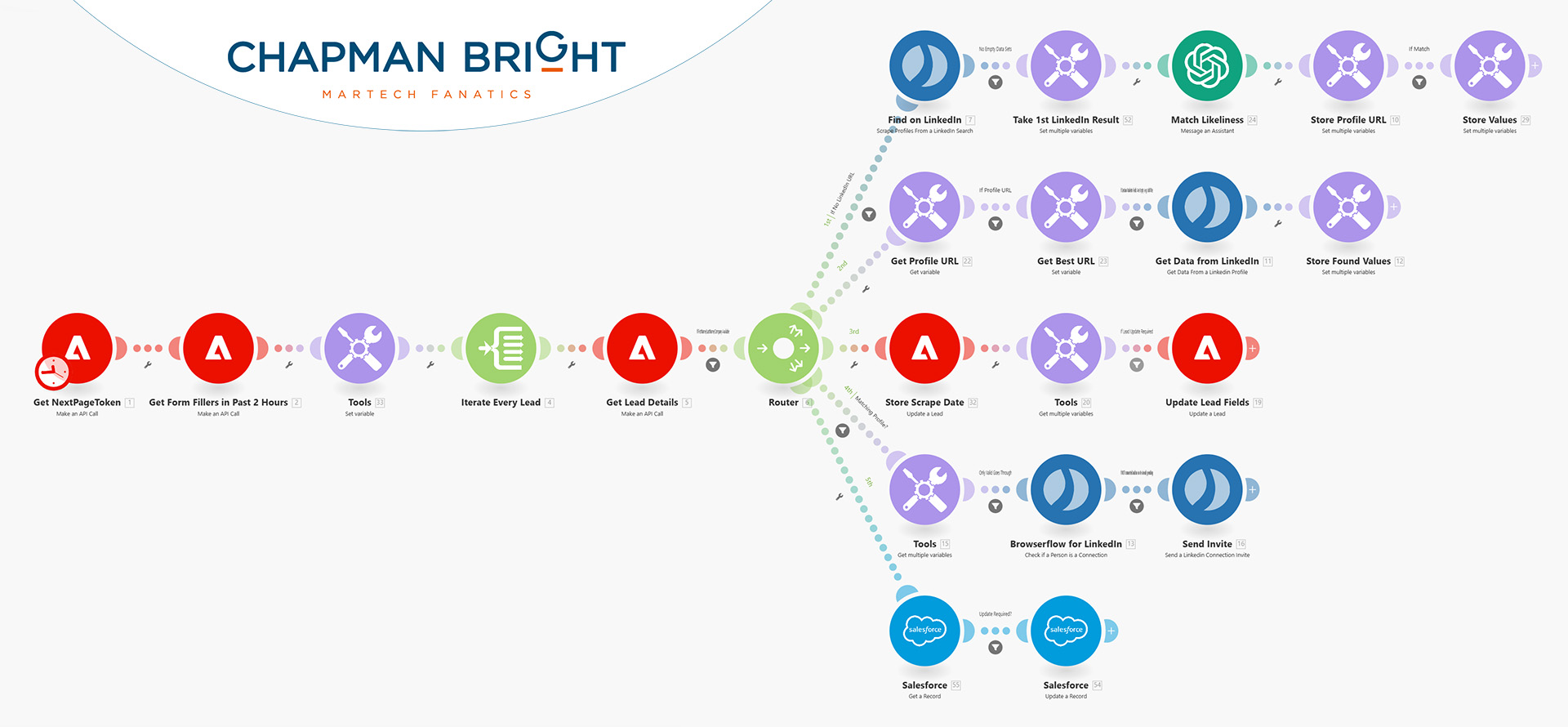
Automate CRM with LinkedIn Data Enrichment
Are incomplete LinkedIn profiles in your CRM holding your sales team back? Discover how automation can bridge the gaps and supercharge your outreach.
The Challenge of Incomplete CRM Data
Sales teams know the frustration of relying on CRM systems filled with incomplete LinkedIn data. Missing job titles, outdated industries, and incorrect contact information slow down outreach and reduce its effectiveness. Often, the only alternative is manually researching profiles—a time-consuming, inefficient process that can pull focus from high-impact sales activities. This bottleneck not only limits personalization but also negatively impacts conversion rates, leaving potential opportunities untapped.
The Automated Answer to CRM Data Enrichment
Manual updates for CRM records are now a thing of the past. Here’s how an automated process can seamlessly enrich LinkedIn data in your CRM:
- Trigger Automatic Data Capture: Leverage workflows that activate when a prospect fills out a form on your website. Extract LinkedIn profile details such as job titles, industries, and contact information.
- Sync with CRM Records: The system cross-references existing CRM data against the gathered LinkedIn data. Missing or outdated fields—like new job titles or industries—are automatically updated.
- Flag Discrepancies for Review: Automation is intelligent but not always perfect. When mismatches arise, the system flags them for team verification to maintain data accuracy.
- Notifications for Role Changes: Set up alerts that notify your sales team whenever a key contact changes roles, so you stay on top of potential lead shifts.
Implementing this solution doesn’t just eliminate the grunt work; it turns your CRM into a dynamic and relevant database. With automation, your sales team can focus on personalizing their approach with data they can rely on.
Enhanced CRM, Better Lead Engagement
By automating CRM data enrichment, your sales and marketing teams gain richer, always-up-to-date lead profiles. This enables more personalized, targeted outreach, improving your response rates and potentially increasing conversion opportunities. Time previously spent on manual data cleanup can now be reallocated to high-value tasks that drive results.

